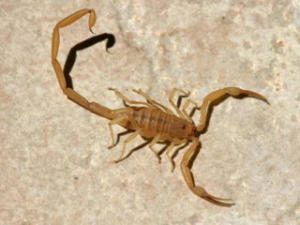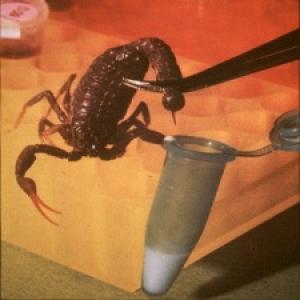We all must remember what our grandparents say when we went to bed. “Don’t let the bedbugs bite!”, that warning has a logic explanation. When grandma and grandpa lived their childhood, they probably lived in the countryside. Nothing prevented bugs from coming into the house. As a result, children and adults exposed themselves to danger in their sleep.
So the bedbug enters, and this little pest feeds on human blood and can cause rashes, allergies and other diseases. Once considered eradicated in the 40’s, the bug still hangs around due to pesticide resistance.

Similarly, finding scorpions in boots and shoes is common in warm regions like the Southwest. Custom dictates that after you get up from bed, you should check your shoes for scorpions. It so happens that the bark scorpion that lives in Arizona is the most venomous in America. Its sting is very painful and according to victims, it feels like a jolt of electricity.
So it’s normal that every time we see a scorpion it means danger. Actually, most scorpion species aren’t lethal at all, if anything, they’re not considered a threat to humans. A study made at the University of Costa Rica revolves around this idea as well.
What’s the word about scorpions then?
The fact of the matter is that scorpions are venomous. Perhaps that’s the reason behind why so many people are afraid of them. Nevertheless, there are but a few exceptional species that can really kill a human being. There’s an African and Middle East species which venom causes human fatalities. Be that as it may, its venom only affects elderly or very young aged people.
Costa Rica has a scorpion species that qualifies as non-lethal. The University of Costa Rica just published a paper that confirms this statement. Results say that scorpion sting isn’t a major health threat nor causes death by poisoning in the country. This research was conducted by the Institute Clodomiro Picado and based on statistical analysis.
In 1992, 24 people reported scorpion sting incidents, in 1998 there were 206 cases and the next year that number duplicated. In any case, none of these cases resulted in death. Even more, an analysis made by Aarón Argüello – also from the ICP – says that scorpion fatalities are practically zero.
“People stung by scorpions don’t have any health problems afterward unless they have allergies”, states Argüello. He adds that the pain from the actual sting is bearable, even without medication. The scientist acknowledges one exception when a little girl died due to a scorpion sting.
So, we’re safe then?
So far there are no reports on Costa Rican scorpions being a menace for the population. Regardless, two potentially dangerous species live in Costa Rica, the country is prepared for unexpected events. Argüello says that even though dangerous species live in the nation, data indicates no incidents. “One would think that if these species live out there, something should happen, but it hasn’t”, he concluded.

The final results of the research left solid basis in local entomology. Granted, anti-venom production isn’t considered necessary at the moment in Costa Rica. Despite this, Argüello says that further investigation could give interesting results. He explains that Cubans found in their blue scorpion a possible source for curing cancer.
If you’re visiting Costa Rica, don’t worry, there are enough safety measures in local lodges. Even if something happens, medical assistance is good enough so that those kinds of situations aren’t a problem. Remember that many of these species got here before we did. As a conscious lifeform, the natural thing for us is adapting to the environment, not make the environment adapt to us.
It’s funny whenever someone says that we put the earth at risk. The planet is fine and has survived rough moments, it’s our own species that need our aid. Whenever the planet feels like it, – if it indeed it does – it can wipe us out in a second. So why don’t we behave and enjoy the view without doing any harm? We’ll discover that nature can treat us nice in return.
